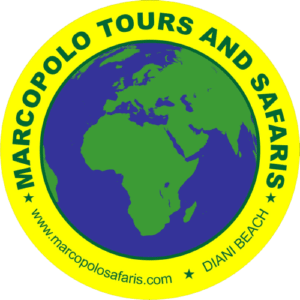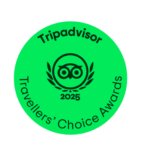We will pick you early in the morning from your Nairobi Hotel and drive to Nairobi with a visit to the Giraffe centre. The centre has been ostensibly set up as a breeding centre for the endangered Rothschild giraffe, but now operates conservation/education programs for Kenyan school children. There is good information on giraffes available here, and an elevated feeding platform where visitors meet the resident giraffes face to face. Hand feeding giraffes is an education in itself. You will see, close at hand, how they use their long, prehensile tongues to remove leaves from prickly acacia branches. Then proceed to Dr Sheldrick Animal orphanage which is open for 1 Hour from 11.00 am to 12.00 pm. Then drive to Karen Blixen coffee house for your lunch. After your lunch drive to Nairobi National park. A short drive out of Nairobi’s central business district is the Nairobi National Park. Wide open grass plains and backdrop of the city scrapers, scattered acacia bush play host to a wide variety of wildlife including the endangered black rhino, lions, leopards, cheetahs, hyenas, buffaloes, giraffes and diverse birdlife with over 400 species recorded. Visitors can enjoy the park’s picnic sites, three campsites and the walking trails for.
History
Nairobi the capital city of Kenya is situated in the southern part of the country at an altitude of 1,660 meters above sea level. It is considered one of the most prominent cities in Africa, housing many multinational companies and organizations, including many UN bodies.Today, Nairobi are a cosmopolitan city attracting different ethnicities and nationalities and has a population currently estimated at 3 million.
The construction of the Mombasa to Kisumu railway played an important part in the development of Nairobi and is an indispensable element of its life and economy. It is widely considered to be the beginning of the development of Nairobi as it is known today. The railway line reached the site where Nairobi now lies on 30th May 1899, when the city was just bare open plain roamed by grazing wild game. It was decided to construct a base for the railway workers before proceeding to the next phase of construction. The railway headquarters was transferred from Mombasa to the site two laters, and a railway town sprung up.
There were no inhabitants, except the nomadic Maasai community. The Maasai called this place “Enkare Nyirobi”meaning a place of cool water; the name has since changed to Nairobi
From1899 to 1905, it served as the British provincial capital .In the year 1905,Nairobi become the capital of the British East Africa Protectorate and in the year 1963, it became the capital of independent Kenya.
Today, Nairobi is a fine mixture of concrete and bush, and lives up to its billing as the CITY IN THE SUN. The tall building structures in city centre are surrounded by vegetation that adds to the beauty of this city. The surrounding areas are even greener, with beautiful architecture of buildings hidden within lush semi forest vegetation, adding to the freshness of the environment.
Nairobi National Park
The park occupies 117km2 and was the first national park established in Kenya in 1946. It is the only wildlife park in the world where free ranging lions and rhinos share a city with humans and the only protected wildlife area in the world bordering a capital city and dubbed “ The world’s only wildlife capital”
The park’s main gate is located 10km from the city- centre and the fence runs parallel to the city. The athi-Kapiti plains and Kitengela migration corridors are unfenced and are important wildlife dispersal areas during the rain season. Man-dams within the park attract many animals and are important during the dry season.
Major wildlife attractions are the black rhino and the white rhino (indigenous), lion, leopard, cheetah, hyena, buffaloes, giraffes, zebra, wildebeest, elands and 400 species of birds. Other attractions include the Ivory burning site Monument, Nairobi safari walk, the orphanage and walking trails at hippo pools.
Nairobi animal orphanage
Established in 1964, it is the oldest animal orphanage in Kenya and set in Nairobi national park. It is a refuge and rehabilitation centre for the wild animals found abandoned or injured in Kenya. Animals at the facility undergo a thorough medical examination, followed by treatment if needed, before entering into an appropriate feeding and rehabilitation program.
Wildlife:Lions,cheetah,hyena,jackal,serval,rare sokoke cats,warthog,ostrich,leopard,various monkeys,baboon,buffalo,parrots,guinea fowl, crown crane.
Kenyatta International Conference Centre
The general public can travel up the interior of the conference centre tower in the high speed lifts to the 27th floor and walk the final 3 floors of the stairs up to the roof for a 360 degrees birds eye view Nairobi city. For safety, there is a handrail around the perimeter. It has a helipad, the only one in the city, on the top tier of the tower.
Besides viewing, it has become a haven for journalists, artist and performers who delight in the perfect photography and videoing angles it presents. A number of the local videos run on our local television and internationally aired documentaries have been shot atop the tower.
Sheldrick Elephant orphanage
The orphanage is located within the Nairobi National park, with the entrance on Nairobi to Kiserian Road, opposite the Kenya school of communication studies. It is centre for the rehabilitation and rearing of orphanage baby elephants.
It was founded by Daphne Sheldrick in 1977 in honour of her late husband and famous naturalist, David Leslie William Sheldrick, his wife, continues his work of raising orphan elephants that have been brought to her from all over the country. The orphanage is a charitable organization, and is open to visitors daily between 11am and 12 pm daily, when the baby elephants take their mud baths.
The orphanage has a truly dedicated and experienced team that is committed to ensuring the survival of these animals and their successful reintroduction into the natural wild. The feeding time is truly interesting; with the baby elephant’ behaving just likes babies, naughty, playing, and running around trying to catch the attention of everyone.
Giraffe center
The center was started as a refuge for the endangered Rothschild giraffe trans located from Western Kenya. It is the perfect location to see giraffes eye to eye and feed them with specially made hay-pellets, which they take from your hand using their sticky 25 inch long blue –grey tongues.
Today there are about 1,500 Rothschild giraffe in Kenya with the biggest herd at Soysambu Conservancy on the shores of Lake Elementaita.
Museums
Nairobi National Museum, Snake park and Botanical Gardens.
The park hosts permanent and temporary exhibitions about peoples, cultures, wildlife, prehistory and restaurants. It has a specific designated art gallery exhibits works by contemporary Kenyan and international artists. The adjoining snake park has a large collection of reptiles and mammals. The Botanic gardens and Nature Trail has the Kaya forest, grasses of Kenya and Sculptures including medicines plants. Located on the grounds of Nairobi National Museum is the for Nature Kenya.
Karen Blixen Museum
The museum was set up in 1985 on the Blixen’s coffee farm at the foot of the Ngong Hills and still retains much of its original features. The colonial farm house is indeed well preserved. Much of the original furniture is still preserved in their original state, including kitchen utensils, photographs and original oil portraits painted by Ms Blixen. Within the compound is a coffee-drying plant and small carriages that were used to ferry the coffee tot the market.
Briefy,Karen Blixen is the author of the famous book Out of Africa, which was made into a film in 1985.She lived in the M’ogani House from 1913 to 1931, and her pen name was Isak Dinesen. The house was built by a Swedish settler in 1911 and Karen coffee company took it over in 1913 when Bror Blixen bought the coffee company for Karen. Just before the Karen Blixen Museum is the Swedo House that was built in 1912 as the residence for the Swedish manager of the coffee plantation.
Experience and well versed guides are available to take visitors through the house, with very detailed explanations about the history of Karen and her life. The museum is located in Karen area, near the Karen country club.
Maasai market is an open-air market ideal for African handicrafts, jewellery and souvenirs like beaded jewellery, batiks, baskets,sculptures and paintings. It features at designated areas during the week.
The Carnivore
Nairobi’s old time favourite and internationally acclaimed, the Carnivore is a meat specialty restaurant and the ultimate “Beast of a Faest”Whole joints of meat-legs of lamb and pork, haunches of exotic meat, rumps of beef, sirloins,racks of lamb, spare ribs,sausages,chicken wings, skewered kidneys, even crocodile and other tasty morsels-are roasted on traditional Masai swords over a huge, spectacular charcoal pit that dominates the entrance of the restaurant.
The Simba saloon at The Carnivore is for those who do not want indulge in a large meal. it serves pizzas (from a traditional,domed,brick oven),an extremely popular salad bar at lunchtime,steaks,hamburgers,scampi,trout,chicken and other light snacks. it includes a nightclub from Wednesday to Sunday and has themed nights to cater for fans of contemporary African music,rock soul, jazz and latest hits.
We offer Safaris to Tsavo East, Tsavo West, Amboseli, Masai Mara, Lake Nakuru, Lake Naivasha and Tanzania as group tours or private tours.

Mobile +254 722 696 533
WhatsApp +254 702 291 817
info@marcopolosafaris.com | marcopolosafaris@gmail.com
Head office
Diani Beach Rd, Ukunda, Mombasa, Kenya
Mon – Sun 8.00 – 18.30
Nairobi office, waiyaki way
